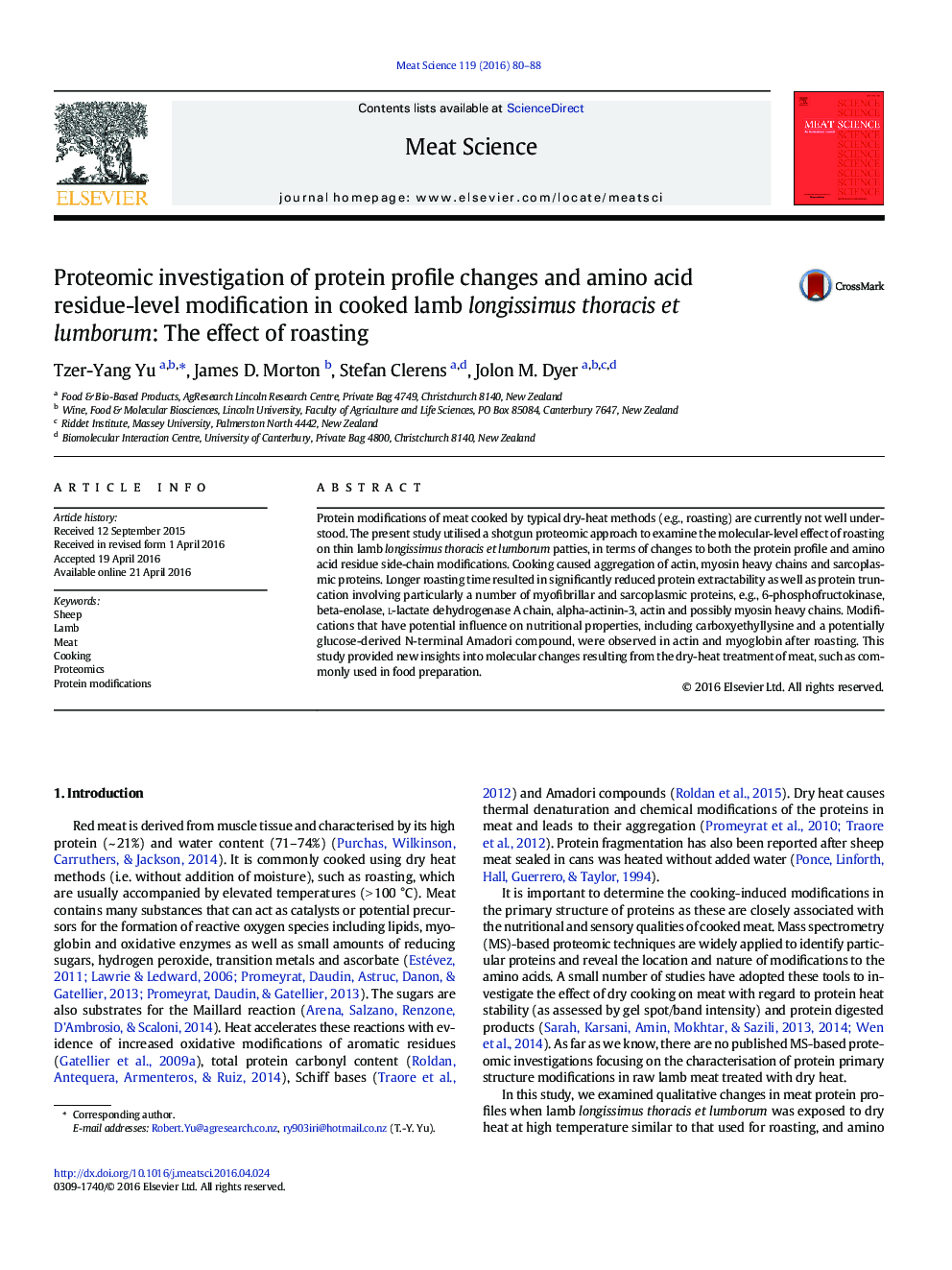| کد مقاله | کد نشریه | سال انتشار | مقاله انگلیسی | نسخه تمام متن |
|---|---|---|---|---|
| 2449369 | 1554075 | 2016 | 9 صفحه PDF | دانلود رایگان |

• Shotgun proteomic evaluation of protein modifications in dry heat-treated lamb
• Longer roasting reduced meat protein extractability in urea–thiourea solution
• Longer roasting also resulted in protein truncation.
• Some modifications that might influence nutritional properties, e.g., carboxyethyllysine, were observed after roasting.
• Actin and myoglobin may provide peptides as potential markers of cooking in lamb meat.
Protein modifications of meat cooked by typical dry-heat methods (e.g., roasting) are currently not well understood. The present study utilised a shotgun proteomic approach to examine the molecular-level effect of roasting on thin lamb longissimus thoracis et lumborum patties, in terms of changes to both the protein profile and amino acid residue side-chain modifications. Cooking caused aggregation of actin, myosin heavy chains and sarcoplasmic proteins. Longer roasting time resulted in significantly reduced protein extractability as well as protein truncation involving particularly a number of myofibrillar and sarcoplasmic proteins, e.g., 6-phosphofructokinase, beta-enolase, l-lactate dehydrogenase A chain, alpha-actinin-3, actin and possibly myosin heavy chains. Modifications that have potential influence on nutritional properties, including carboxyethyllysine and a potentially glucose-derived N-terminal Amadori compound, were observed in actin and myoglobin after roasting. This study provided new insights into molecular changes resulting from the dry-heat treatment of meat, such as commonly used in food preparation.
Journal: Meat Science - Volume 119, September 2016, Pages 80–88